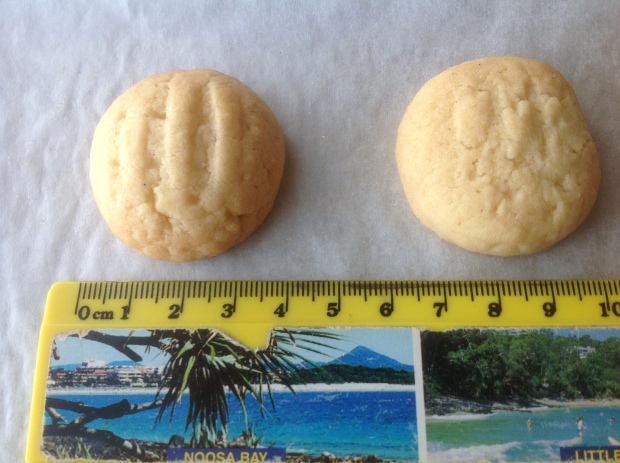A number of people have expressed interest regarding entry to the local Country Woman’s Association (CWA) cookery competition, so this post is focused on hints and tips for competing in a baking competition.
Firstly, bring along your entry, even if you think it is not quite good enough. One of the key reasons to enter is to learn about cooking, and each entry will improve your chances at getting there. The judges will often give feedback (without naming anyone) on the cakes and everyone always comes away with something new learned.
Secondly, read the schedule (or criteria for entry) very carefully. Some entries require you to use a particular recipe, or ingredient, others allow you to use your own recipe. Very often a particular size cake pan must be used.
Thirdly, if using a recipe, follow it, but also use your own judgement. If the cake batter looks too dry, add a bit more liquid. Flours do vary, and also the temperature and humidity can affect the final result. Each oven is also individual, so in regards to the cooking time, test the cake to see if it is done. It may need more time or less time than suggested in the recipe.
Fourthly, it is all about taste. Where two cakes are very similar, the one that will have an advantage is the one with the best flavour. Use the best and freshest ingredients to get the best result.
Lastly, practice makes perfect. Like all things, skills are developed over time. Experience is built up, cake by cake. So give it a go, and be proud of your achievements!

Size is important – check the competition requirements
What Not To Do:
Rack marks – A cooked cake is turned out onto a rack to cool, this prevents the cake getting soggy on the base. However, to prevent rack marks, firstly cover the rack with a few layers of newspaper and then a clean tea-towel. The newspaper and tea towel will absorb moisture and protect the cake from getting marks. Make sure that you have the right side of the cake facing up (usually the upper side, except for sandwiched cakes).

Issue: Rack marks and dripping icing
Cutting cakes – Unless specified (for example for cake pieces, such as lamingtons) the cake is only cut by the judge.
Testing cakes – Do use a very fine skewer to test for doneness. You do not want to holes to show in the cake from a thick skewer.
A Guide on Cake Judging:
Firstly, the judge will pick up the cake with both hands and inspect the sides and underneath of the cake to see if it is cooked properly. At this point, the cake will be checked for rack marks. The top will also be inspected for any signs of stickiness or spotting.
Then the judge will cut the cake in half and inspect the inside of the cake, checking for aroma, texture and for any inconsistencies.
A small notch is cut from the centre of the cake and tasted. The centre of a cake will generally be the last area to be cooked, so if there is an issue with undercooking, this will be picked up by the judge. The judge will also assess the balance of flavours.
The cake will then be replaced and the judge will go onto the next entry. I have seen judges tasting more than fifty entries at a sitting at the Sydney Royal Agricultural Show. They truly are amazing!
Troubleshooting for cakes:
This is not an exhaustive list, but shows some of the key issues that can occur with cooking cakes.
Cake is cracked at the top – the oven temperature is too high and the cake rises too quickly, or the cake batter may be too dry.
Cake sinks in the middle – the oven temperature may be too low or oven opened too soon after putting in the oven. The heat of the oven causes the cake to rise and set, if it is too low, then the cake may not rise properly.
Cake is unevenly browned – many ovens have different temperatures throughout. The cake can be turned halfway though the cooking process to prevent this.
Cake top is sticky – this may be caused by undercooking the cake or cooking at to low a temperature.
White spots on the cake – indicates that the sugar was not dissolved properly in the creaming process.
Course or open texture of the cake crumb – may indicated insufficient creaming of fat and sugar. Flour may not be folded into the mixture properly.
Holes in the cake – this may be caused by air bubbles trapped in the cake batter. Tap the cake gently on the bench before baking to encourage air bubbles to come to the surface.
Links for the current CWA of NSW cookery competition, including the schedule and recipes: www.cwaofnsw.org.au/cookery.html
Further reading:
“Jam Drops and Marble Cake”, CWA of NSW, 2012
“Merle’s Country Show Baking”, Merle Parrish, 2013
“Cookery the Australian Way”, Barrowman and Cameron et al, 1975. More hints are given here about faults with cakes.
Related Articles: Marble Cake, I’m Still Here…

Photos and text copyright Sophia Poulos.

Great tips Sophia!x
LikeLike
Thanks Vicky!
LikeLike